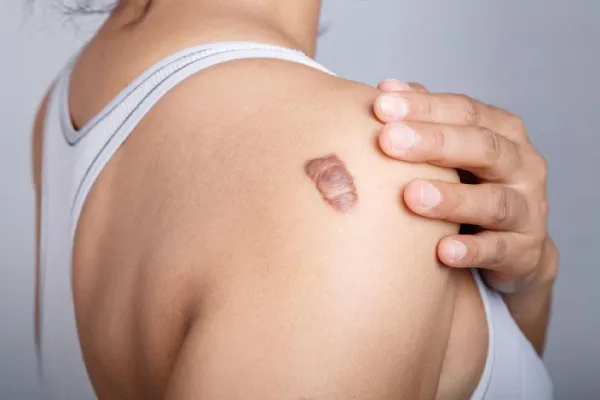Keloids are raised scars that develop where the skin has healed after an injury. Unlike regular scars, keloids grow much larger than the original wound and can become a cosmetic concern or cause discomfort. For individuals struggling with keloids, Keloid Removal in Navi Mumbai offers a range of effective treatments to help restore skin appearance and relieve any associated discomfort.

A keloid is an overgrowth of scar tissue that occurs at the site of a skin injury. They can develop after minor injuries like cuts, burns, acne, or piercings, and even after surgical incisions. Keloids are characterized by their firm, raised appearance and can vary in color from pink to dark brown. Unlike regular scars, keloids extend beyond the boundaries of the original wound and do not regress over time. Instead, they may continue to grow and thicken, causing cosmetic concerns and sometimes discomfort or itching.
Keloids are more common in people with darker skin tones and are particularly prevalent in individuals of African, Asian, and Hispanic descent. They can develop on any part of the body but are most commonly found on the chest, shoulders, earlobes, and cheeks.
When the skin is injured, the body produces collagen to repair the wound. In some people, the body produces too much collagen, leading to the formation of a keloid. Genetics also play a significant role, as keloids often run in families.
Certain factors can increase the risk of developing keloids, including:
The choice of treatment depends on the size, location, and severity of the keloid, as well as the patient’s skin type and overall health. Here are some of the most common methods used for keloid removal:
Recovery from keloid removal varies depending on the method used. Non-invasive treatments like corticosteroid injections or silicone gel sheets typically have minimal recovery time, allowing patients to resume normal activities immediately. Surgical excision or cryotherapy may require a longer recovery period, with patients advised to avoid strenuous activities for a few days to weeks.
After any keloid removal treatment, it is crucial to follow the post-treatment care instructions provided by the specialist. This may include keeping the area clean, applying prescribed ointments, and avoiding sun exposure to prevent hyperpigmentation. Regular follow-up appointments may be necessary to monitor the healing process and ensure the keloid does not recur.
For patients struggling with keloids, removal in Navi Mumbai offers a path to smoother, scar-free skin. Dr. Sanket Ekhande, with his exceptional skills in plastic surgery, ensures that the procedure is conducted with the utmost care to minimize the risk of recurrence. The surgery is performed with precision, using fine sutures that blend with the skin, leaving little to no visible scarring. Dr. Ekhande's approach is not only effective but also focuses on patient comfort, often utilizing techniques like dissolvable sutures to further ease the recovery process. Patients can trust in his expertise to achieve the best possible outcome with minimal discomfort.
Keloids can be challenging to manage, but with the right treatment, it is possible to reduce their size and improve the appearance of the skin. Keloid Removal in Navi Mumbai offers a range of advanced treatment options to individual needs. If you are considering keloid removal, consult with a specialist Dr. Sanket V. Ekhande, one of the best plastic surgeons in Navi Mumbai, can help you explore the best options for your situation. Schedule your appointment today and take the first step towards smoother, healthier skin.
Dr Sanket Ekhande is available across multiple locations in Navi Mumbai:
📌 Belapur
📌 Nerul
📌 Vashi
Copyright © All Rights Reserved, By Dr. Sanket Ekhande | Sitemap | Privacy Policy